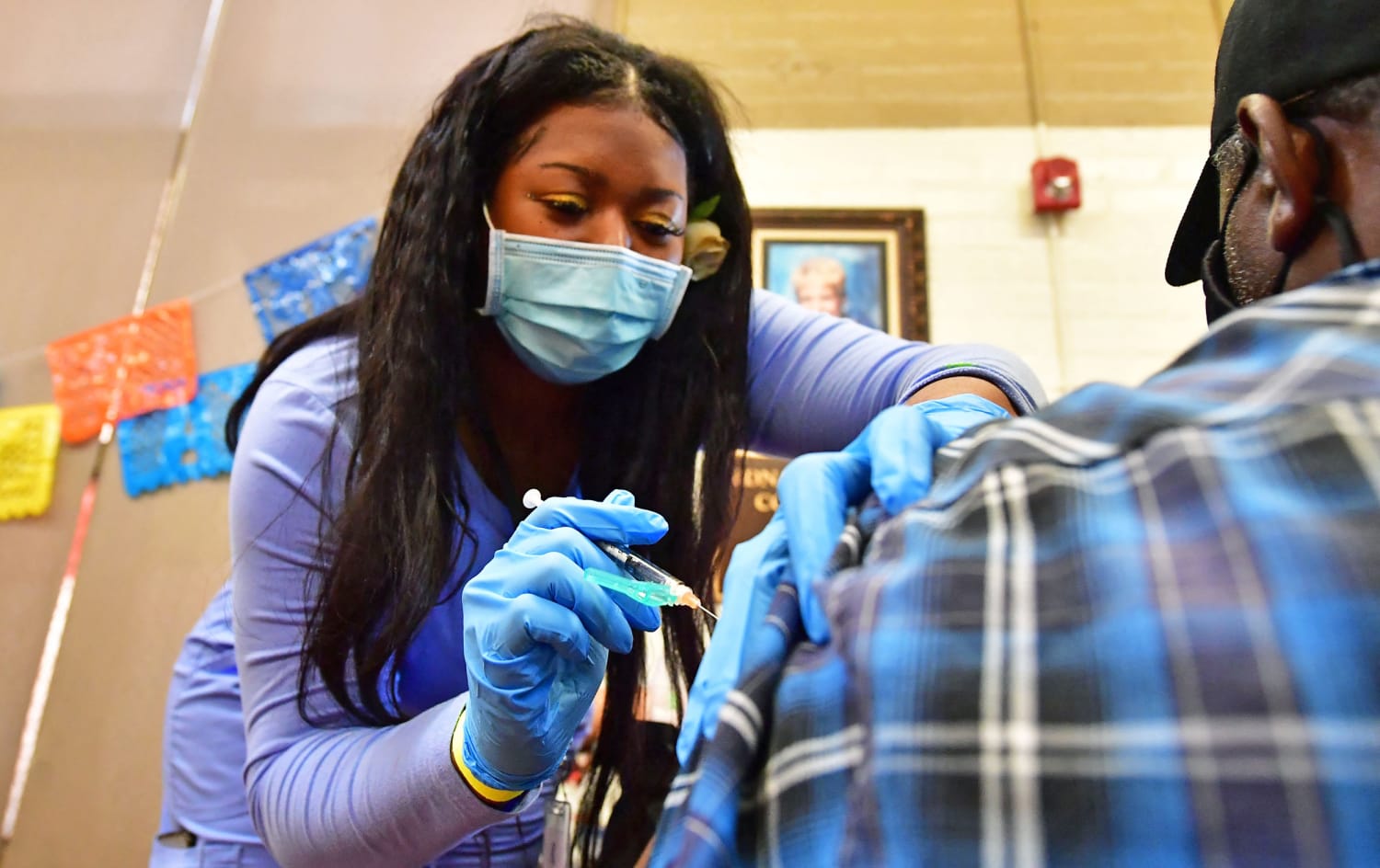The next round of Covid booster shots should be modified to target the supercontagious omicron variant, a Food and Drug Administration advisory committee recommended on Tuesday.
The vote capped off a daylong meeting in which the panel members grappled with how to get ahead of a virus that has outsmarted us for more than two years.
The Vaccines and Related Biological Products Advisory Committee voted 19-2 in favor of recommending that booster shots include a component that targets the omicron variant.
Full coverage of the Covid-19 pandemic
The panel did not, however, make a recommendation about what specific formulation the updated booster should take. That decision falls to the FDA.
One question that came up many times during the discussion was whether to target the original strain of omicron, known as BA.1, or to target the subvariants BA.4 and BA.5, the strains that are currently spreading in the U.S.
BA.1 was the first omicron variant; it became dominant in the U.S. in December but has since faded. BA.4 and BA.5 — considered the most contagious form of the virus to date — are rapidly gaining ground in the U.S. For the week ending June 25, the two subvariants combined made up about 52% of all new Covid cases in the country, according to the Centers for Disease Control and Prevention. They overtook BA.2.12.1, another subvariant that only became dominant in mid-May.
Dr. Peter Marks, the FDA’s top vaccine regulator, acknowledged that the question before the committee was challenging and would require guesswork, saying that the federal agency was essentially asking the panel to act as a sort of “crystal ball.”
The FDA could make a final decision on the boosters early next month, Marks said. That would allow Pfizer-BioNTech and Moderna to begin the three-month process of manufacturing and distributing the shots, which are needed for an anticipated October booster campaign.
The existing booster shots, from Pfizer and Moderna, target the original coronavirus strain identified in Wuhan, China, in late 2019 and thus have been a poor match for omicron and its growing family of subvariants.
The U.S. government is hoping that by tweaking the vaccines to better match circulating strains, it will improve the shots’ effectiveness and perhaps provide longer-lasting immunity.
Tuesday’s discussion reflected the uncertainty some committee members had about whether the omicron-specific vaccine would indeed offer stronger protection over the existing shots, especially given the fact that scientists still don’t know what version of the virus will be the country’s main threat this fall.
“I’m not sure we have enough evidence to support a change today,” said committee member Adam Berger, a researcher at the National Institutes of Health, before voting in favor of the recommendation.
Committee member Dr. Hayley Altman-Gans, a pediatrician at Stanford University Medical Center, acknowledged her fellow panel members’ uncertainties, but also cautioned against waiting to make a decision until they had all of the data, noting they’ve “fallen behind” the virus in the past. She voted yes.
Since the start of the pandemic, the coronavirus has been fast-changing, with new variants emerging every few months, causing additional surges in cases, hospitalizations and deaths.
Committee member Dr. Paul Offit, a vaccine expert at Children’s Hospital of Philadelphia, agreed that additional booster doses were needed in the fall for some high-risk groups, but was unsure whether it should include the original omicron strain. Offit, who was one of the two “no” votes, said he would support a booster that targeted BA.4 and BA.5, rather than BA.1.
BA.4 and BA.5, though subvariants of omicron, are significantly different from the first version of the variant, so it’s unclear whether a vaccine that targets the original variant would work well against them.
Justin Lessler, a professor of epidemiology at the University of North Carolina, Chapel Hill, presented modeling data to the committee that showed there was a high likelihood of a resurgence in Covid cases this fall and winter.
Because of the potential surge, he said, there could be between 95,000 and 211,000 additional Covid deaths in the country between March 2022 and March 2023.
Pfizer and Moderna representatives at the meeting presented data to the committee that showed their bivalent vaccine — designed to target both omicron and the original coronavirus strain in a single shot — elicited a high level of antibodies against the original omicron strain, as well as BA.4 and BA.5.
People would still be required to get the existing vaccines as their primary series before receiving a booster dose of the bivalent vaccines, FDA briefing documents posted online suggest.
Some committee members worried that distributing two different types of vaccines could confuse the public and cause implementation issues in the vaccine campaign.
Committee member Dr. Cody Meissner, a pediatrician at Tufts University School of Medicine, suggested that the bivalent vaccine only be made available to adults at first, noting that scientists don’t know what the potential side effects are, if any, from multiple doses of the Covid vaccines.
Follow NBC HEALTH on Twitter & Facebook.
Source: | This article originally belongs to Nbcnews.com










